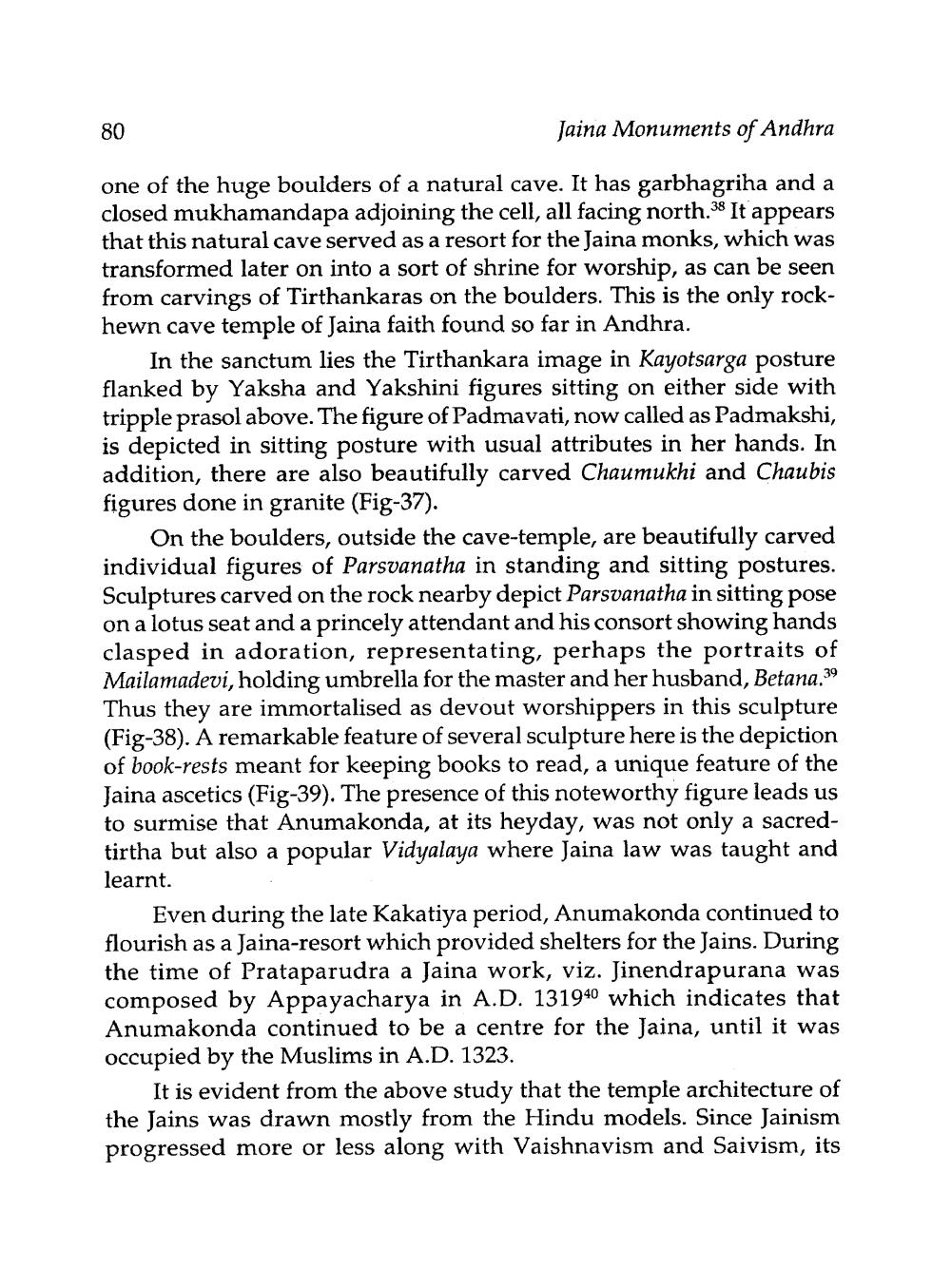________________
Jaina Monuments of Andhra
one of the huge boulders of a natural cave. It has garbhagriha and a closed mukhamandapa adjoining the cell, all facing north.38 It appears that this natural cave served as a resort for the Jaina monks, which was transformed later on into a sort of shrine for worship, as can be seen from carvings of Tirthankaras on the boulders. This is the only rockhewn cave temple of Jaina faith found so far in Andhra.
80
In the sanctum lies the Tirthankara image in Kayotsarga posture flanked by Yaksha and Yakshini figures sitting on either side with tripple prasol above. The figure of Padmavati, now called as Padmakshi, is depicted in sitting posture with usual attributes in her hands. In addition, there are also beautifully carved Chaumukhi and Chaubis figures done in granite (Fig-37).
On the boulders, outside the cave-temple, are beautifully carved individual figures of Parsvanatha in standing and sitting postures. Sculptures carved on the rock nearby depict Parsvanatha in sitting pose on a lotus seat and a princely attendant and his consort showing hands clasped in adoration, representating, perhaps the portraits of Mailamadevi, holding umbrella for the master and her husband, Betana.3 Thus they are immortalised as devout worshippers in this sculpture (Fig-38). A remarkable feature of several sculpture here is the depiction of book-rests meant for keeping books to read, a unique feature of the Jaina ascetics (Fig-39). The presence of this noteworthy figure leads us to surmise that Anumakonda, at its heyday, was not only a sacredtirtha but also a popular Vidyalaya where Jaina law was taught and learnt.
Even during the late Kakatiya period, Anumakonda continued to flourish as a Jaina-resort which provided shelters for the Jains. During the time of Prataparudra a Jaina work, viz. Jinendrapurana was composed by Appayacharya in A.D. 131940 which indicates that Anumakonda continued to be a centre for the Jaina, until it was occupied by the Muslims in A.D. 1323.
It is evident from the above study that the temple architecture of the Jains was drawn mostly from the Hindu models. Since Jainism progressed more or less along with Vaishnavism and Saivism, its




